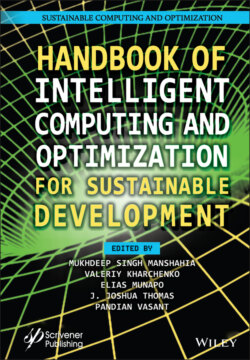Читать книгу Handbook of Intelligent Computing and Optimization for Sustainable Development - Группа авторов - Страница 33
1.9 Conclusion
ОглавлениеIn this paper, a deep learning has been proposed for the prediction of mental workload based on eye movements’ data. First, the data set is collected based on the eye movements during code debugging. Second, the raw eye movement data has been pre-processed and features are extracted for the further analysis. Third, the analysis has been conducted based on the deep learning models. As we can see that the accuracy of the model is quite low, so in the future works, we would try to make a new dataset with more data which can be easily fed to any deep learning network and also work on tuning some parameters of the artificial neural networks which help in increasing the accuracy of the model. The work load prediction which we obtained from the deep learning tool shows that the 8th code which was of unknown difficulty is easy to the person debugging the code. But the probability is slightly >0.5 so doing with more other codes will help in tuning our model and help to increase the accuracy of the predictions.
